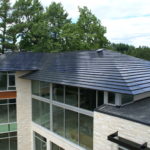 APsmart announced the launch of its dual-module Rapid Shutdown Device, the RSD-D. A key component of a PVRSE solution to meet NEC photovoltaic rapid shutdown requirements, the RSD-D is capable of serving two PV modules simultaneously, is quick and easy to install and is highly cost-effective. APsmart also offers a single-module rapid shutdown device.
APsmart announced the launch of its dual-module Rapid Shutdown Device, the RSD-D. A key component of a PVRSE solution to meet NEC photovoltaic rapid shutdown requirements, the RSD-D is capable of serving two PV modules simultaneously, is quick and easy to install and is highly cost-effective. APsmart also offers a single-module rapid shutdown device.
The new RSD-D meets NEC 2017 & 2020 (690.12) requirements, enabling the critical rapid shutdown function while simultaneously improving product cost and performance. By using the RSD-D and Transmitter-PLC in solar PV installations, the connection between each module can be cut off remotely or manually in case of an emergency, thus eliminating any high voltage DC in the solar array, which reduces the risk of accidents and improves the safety of the PV system.
The highlights of RSD-D include:
- Dual-input channel
- Supports modules at 8-80V Per Channel
- Maximum Current is 15A per input
- Buckle to the PV module frame directly
- IP68 enclosure rating
- Meets NEC 2017 & 2020 (690.12) requirements
- Executes rapid shutdown of system when Transmitter-PLC signal is absent
- Meets SunSpec requirements
The RSD-D is already CSA, FCC, SunSpec Alliance-certified and the recent addition of TUV Rheinland certification further emphasizes the robust safety and quality of the product. The fully compliant RSD-D devices will be shipping soon to markets worldwide.
News item from APsmart






Tell Us What You Think!